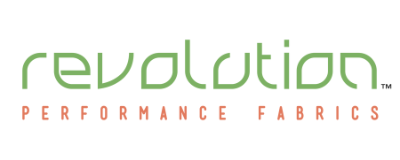
What is a Textile Mill?
A textile mill is a factory or facility that produces textiles from yarn or fabric into usable textiles. Some of these various textiles include apparel, furniture, agriculture, auto, marine, and other industries. Textile mills usually use a multi, or single, step manufacturing process to produce a product. In this blog, I'd like to define the various processes that these textile mills use to produce a usable textile.

Weaving and Knitting
Weaving and Knitting are two processes that take yarns and arrange them into a usable textile cloth. Weaving is a process that takes vertical yarn, called a warp, and combines them with Horizontal yarn, called a weft or filling, to construct a woven textile. These textiles can be used for a wide variety of applications from clothing to industrial uses. Woven textiles are usually better for applications that need to last a long time. They have less stretching than knitted fabrics.
Knitting is a little bit different than weaving. Knitting only requires one yarn that consists of stitches, also called loops, that consecutively run together. These loops make the fabric able to stretch more and are why you see more knitted textiles in clothing than woven textiles. Your favorite sweater is most likely knitted but this does have some drawbacks. This is where the saying, “Pull the thread, the whole thing will unravel” comes from. Since a knitted fabric only consists of a single string that loops in and out of itself, if you pull it, the textile will unravel.

Yarn Textile Mill
Another type of textile mill is a yarn mill. These mills take synthetic or natural materials and turn them into usable yarns for weaving, knitting, and industrial textile mills. One of the best examples of these mills is a cotton yarn mill. These facilities take staple cotton and spin them into yarns that are then either sent to a weaving or knitting mill, or sent to a dying textile mill. Another type of yarn mill is a synthetic yarn mill. They take synthetic fibers and combine them with other synthetic fibers, to simulate the look and feel of natural yarn.

Dye Mill or Dye House
Dye Houses usually add color to both natural and synthetic fibers or to the finished textile. Natural fibers can basically be dyed at any point of the textile manufacturing process. Most synthetic textiles are colored during the yarn stage instead of at the finished textile stage. This is because synthetic fibers usually have to undergo some sort of heat to fuse the pigment or dye into or on the synthetic yarn. Using heat on a synthetic textile cloth can damage the finished textile. That’s why it is imperative to dye the yarns before weaving or knitting the synthetic textile cloth.

Printing Mill
Printing Mills are textile mills that use computers to imprint, dye, and color a finished textile cloth. These designs can be as intricate as the computer and your pigments allow you to get. The downside with printing is the textile isn't dyed all the way through the textile, and because of this, they are often used for lighter applications like pillows, or low-use residential furniture.
Apparel Manufacturing
Apparel manufacturing textile mills take the cloth from knitting mills or weaving mills to turn the textile into a finished wearable piece of clothing. These textile mills have specialized sewers who know how to assemble clothes of various shapes and sizes to turn them into the clothing we all wear.

In conclusion, I hope this brief blog gave you the basic concepts of what the different types of textiles mills are. In future blogs, I am going into more detail about each mill and the machines that help produce textiles in today’s fabric market. Thanks for reading - David

Comments
Leave a comment